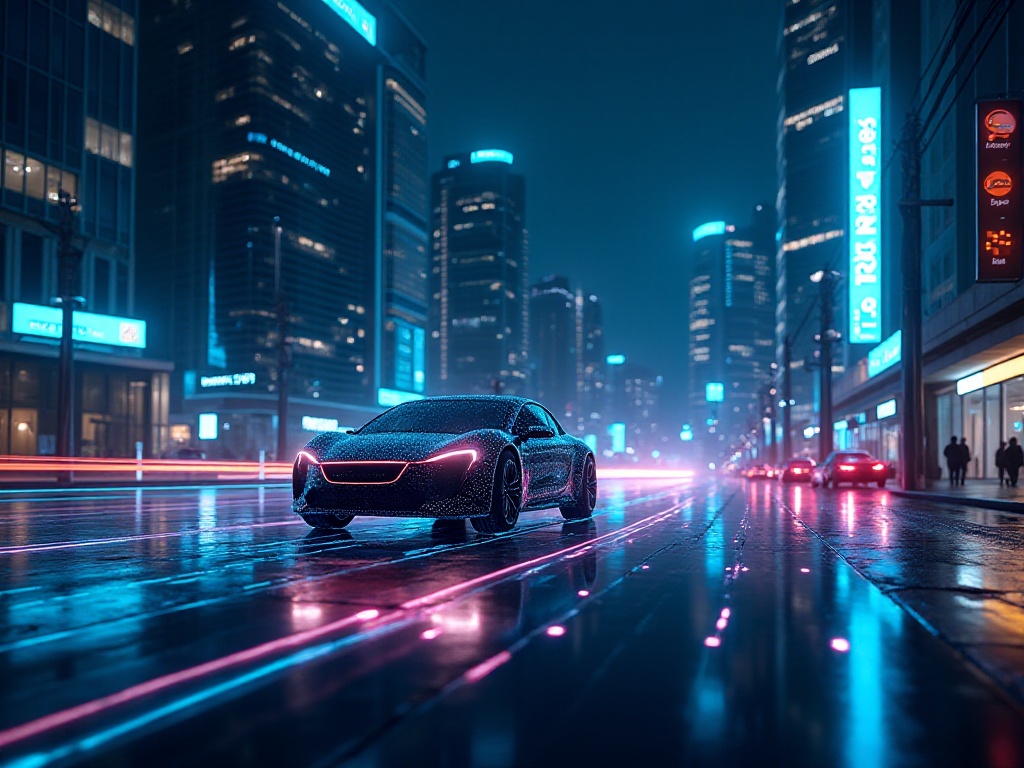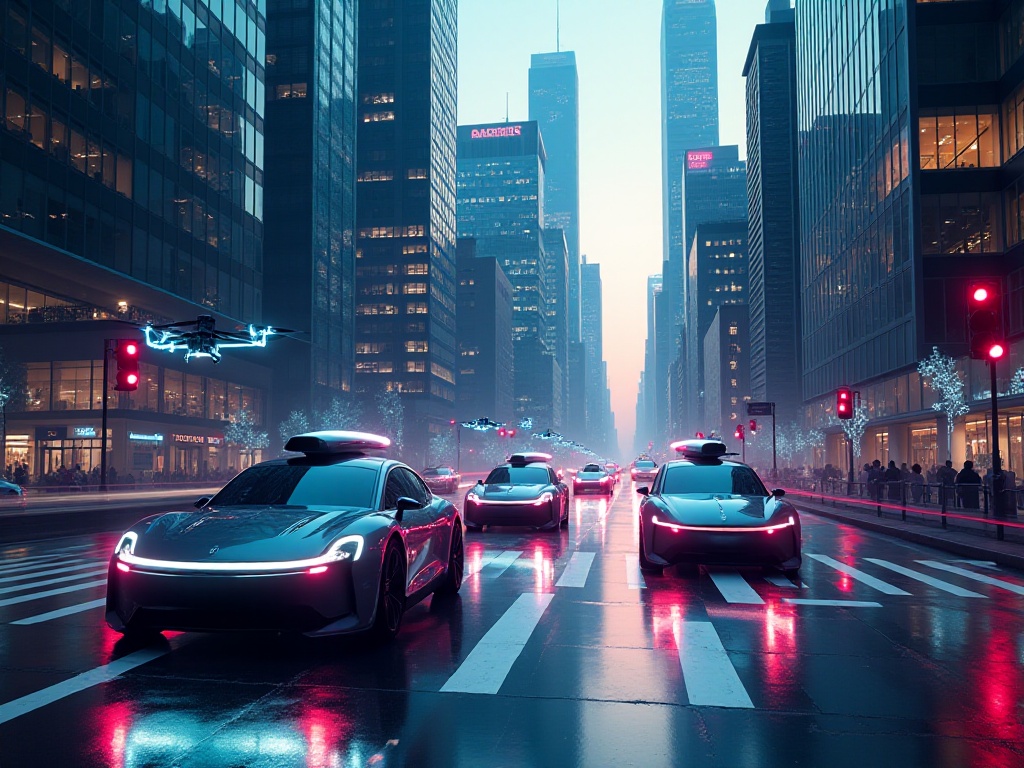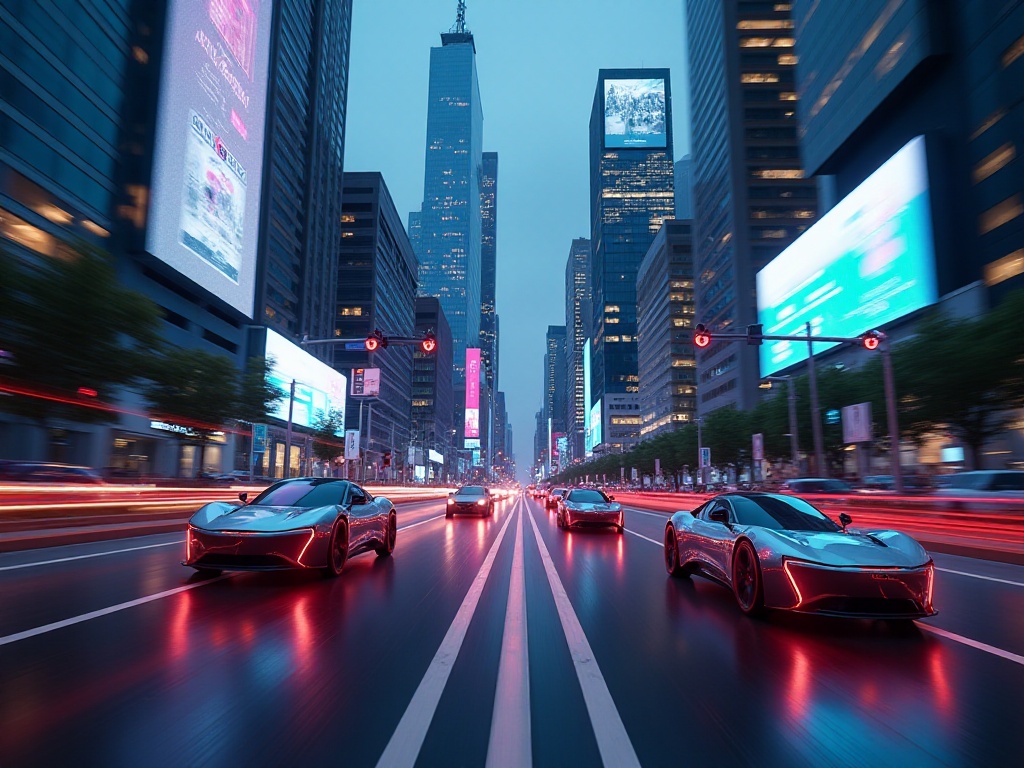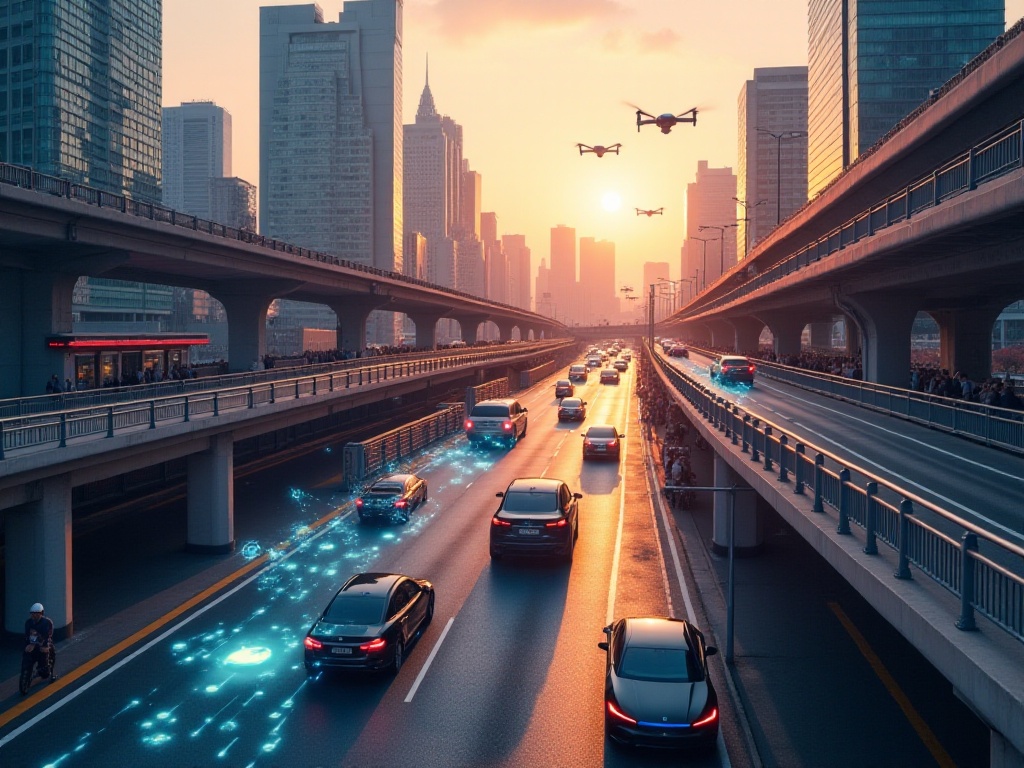Introduction
The Tesla autopilot accident that shocked the world in 2022 was truly alarming. I was scrolling through social media when I saw this news: a Tesla Model S in autopilot mode crashed into a clearly visible fire truck on the roadside, resulting in one death. Honestly, my first reaction was disbelief, given how much Tesla had been promoting their advanced autopilot technology. But thinking carefully, doesn't this accident suggest that we might have overestimated AI's autonomous driving capabilities?
As a technology enthusiast, I've been following developments in autonomous driving. Every time I see news about a brand launching smarter autonomous driving features, I admittedly get a bit excited. However, after years of observation and reflection, I increasingly feel we need to pause and think carefully about autonomous driving.
Current Technology Status
Let me explain the basics of autonomous driving. Current autonomous driving systems are classified into six levels, from L0 to L5, each corresponding to different degrees of automation. L0 is completely manual driving, L1 is basic driving assistance like cruise control. L2 is what we commonly see now, with automatic steering and speed control, but requiring drivers to be ready to take over. L3 is more advanced, allowing fully autonomous driving in specific conditions, but requiring driver intervention in special situations. L4 and L5 are like science fiction scenarios, where cars operate completely without human input.
Regarding Tesla, their FSD (Full Self-Driving) system, despite its name, only qualifies as L2+. What does this mean? It means it hasn't reached L3 level. According to latest data, only 0.1% of global vehicles reached L3 level in 2023, while the fully autonomous L5 level still exists only in laboratories.
Why is autonomous driving technology developing so slowly? Let me give you a real-life example. Imagine you're driving and suddenly see a traffic officer in reflective clothing directing traffic in the middle of the road, signaling you to take a detour. For us, this situation is straightforward: see the officer, understand the gesture, follow the direction, all in one smooth process. But for AI systems, this is an extremely complex problem.
First, AI needs to accurately identify this as a traffic officer, not just a worker wearing reflective clothing. Then, it needs to understand what the officer's hand gestures mean, which isn't simple image recognition but understanding human body language. More complexly, AI must combine current road conditions and traffic rules to decide how to proceed. These tasks are natural for humans but each step is a technical challenge for AI.
A friend who works as an engineer at an autonomous driving company told me an interesting example. Once their test vehicle encountered a toy truck parked on the roadside, and the AI system mistook it for a real truck, causing emergency braking that almost led to a rear-end collision. This situation seems very simple to us, but AI couldn't handle it. Why? Because AI learns to identify objects through massive data, and it might never have encountered "exceptions" like toy trucks.
There are even more complex scenarios, like roads with water accumulation during rain or temporary detours due to construction. Even the most advanced autonomous driving systems often make judgment errors in these situations. It's like showing Chinese roads to a foreigner - they might get confused by various non-standard situations.

Data Analysis
Regarding autonomous driving performance, let's look at specific data. The National Highway Traffic Safety Administration (NHTSA) compiled statistics showing that in 2022, Tesla vehicles in autopilot mode experienced one accident per 4.5 million kilometers driven. This might seem good at first glance, but consider this: human drivers average one accident per 6.5 million kilometers.
This data is particularly revealing. We often hear about how impressive AI is, but actual data shows that, at least in driving, AI isn't as reliable as humans. Why is this? I understand that AI handles routine situations well, like standard driving test scenarios. But on real roads, situations are often much more complex.
For example, what would you do if you suddenly saw a plastic bag blown up by wind while driving? Most experienced drivers would quickly judge that the plastic bag poses no danger and maybe slightly avoid it. But an AI system might treat it as a potential hazard and brake hard, actually increasing the risk of a rear-end collision.
I've also seen an interesting statistic: accident rates for autonomous driving systems significantly increase in adverse weather conditions. This makes sense - just as humans are extra careful when driving in heavy rain, AI might make judgment errors due to sensor interference.
Researchers have conducted experiments testing autonomous driving systems in various extreme conditions. They found that AI can make some laughably simple mistakes in seemingly straightforward scenarios. For instance, during one test, the AI mistook a car image on a roadside billboard for a real vehicle and suddenly braked. This reminds me of the joking term "artificial stupidity" - quite fitting indeed.
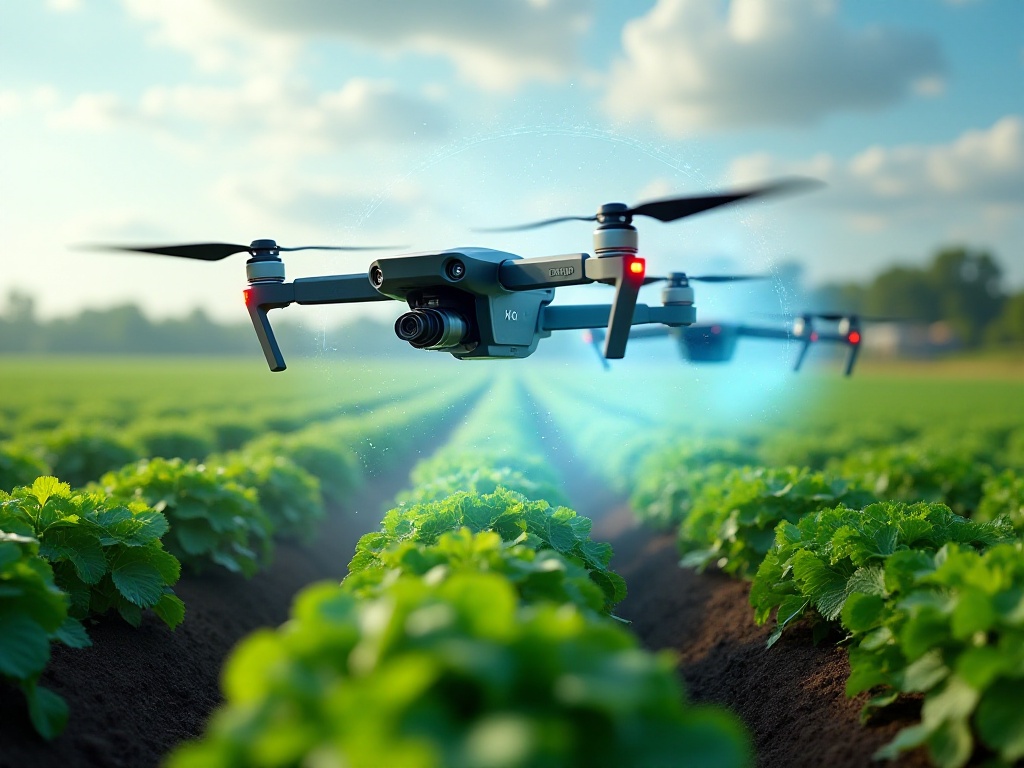
Safety Concerns
Speaking of safety issues, we must address AI systems' "hallucination" problem. What are "hallucinations"? Simply put, it's when AI makes completely incorrect judgments in certain situations. This issue is particularly dangerous in autonomous driving.
I personally witnessed an incident where a car with autonomous driving enabled almost rear-ended a truck on the highway. Why? Because the AI mistook the truck's reflective strips for lane markings. This type of error seems inconceivable to us humans but is quite common for AI.
More concerning is how many car owners over-rely on autonomous driving systems. I have a friend who bought a Tesla and often brags about browsing his phone or watching videos while driving. I always have to remind him that current autonomous driving systems are just advanced driver assistance systems and shouldn't be fully trusted.
The dangers of this over-reliance are obvious. I've seen many videos online of drivers sleeping or even climbing into the back seat while using autopilot. These behaviors are literally playing with life. Even the most advanced autonomous driving systems can have delayed responses or make judgment errors.
Another often overlooked safety concern is system hacking. As cars become smarter and more connected, the risk of hacker attacks increases. Imagine the terrifying consequences if hackers could remotely control your car. This isn't science fiction but a real threat.
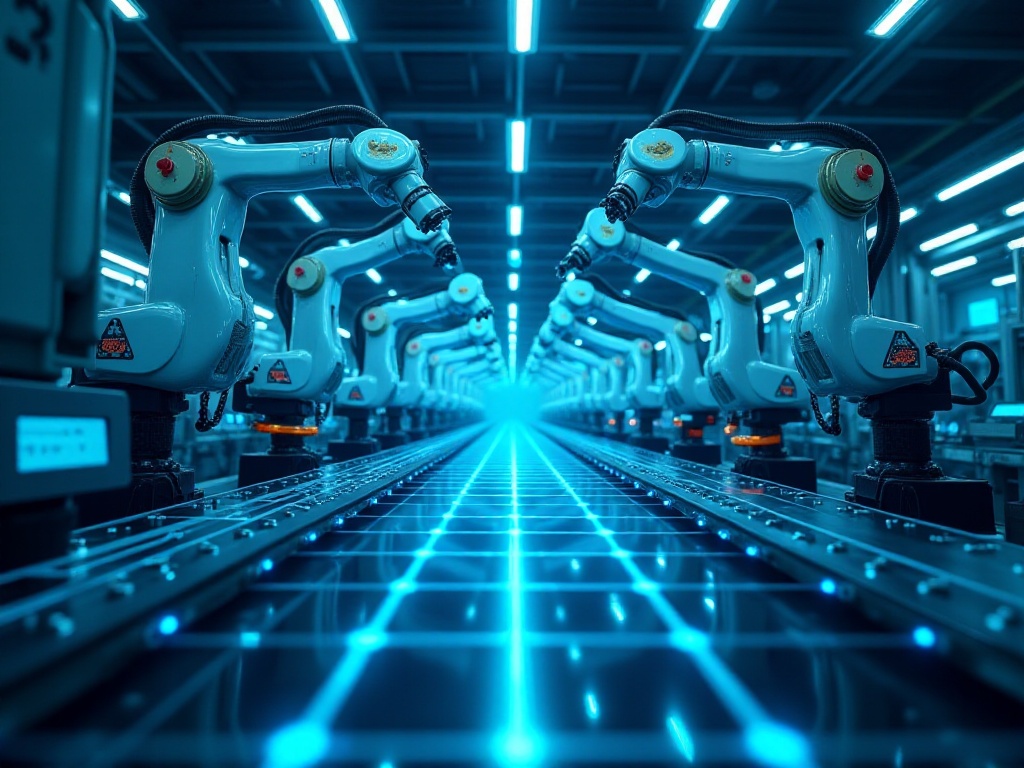
Future Outlook
So where is the future of autonomous driving technology? After years of observation and reflection, I increasingly believe the answer lies in human-machine collaboration. Like modern commercial aircraft, while most of the flight is on autopilot, critical moments like takeoff and landing still require professional judgment and operation from pilots.
Research predicts that by 2030, the global autonomous driving market will reach $7 trillion. While this number is attractive, I think we need a more practical attitude toward this field. Rather than blindly pursuing fully autonomous driving, we should focus on improving the reliability of driver assistance systems.
I believe future development should focus on AI systems better assisting human driving rather than completely replacing humans. For instance, AI can help monitor road conditions in real-time, alert us to potential dangers, and assist with braking in emergencies. But humans should retain final decision-making authority.
Many auto manufacturers are now developing new-generation human-machine interaction systems. These systems go beyond simple autonomous driving, learning drivers' habits in real-time and providing personalized assistance based on different scenarios. I think this is a more practical direction.
Another trend worth watching is the development of intelligent transportation systems. Future roads might be filled with sensors that can communicate with vehicles in real-time. This would not only improve autonomous driving safety but also optimize the efficiency of the entire transportation network.

Conclusion
After all this analysis and discussion, we must admit: we indeed had overly high expectations for AI autonomous driving technology. But this doesn't mean the technology is worthless. On the contrary, we need to approach its development more rationally.
Like smartphones, which also faced various concerns when first introduced but are now indispensable tools in our lives, autonomous driving technology needs time to perfect and for us to explore its most suitable applications.
As a technology enthusiast, I remain optimistic about the future of autonomous driving. But this optimism isn't blind worship; it's based on rational understanding. I believe that if we can correctly recognize AI's limitations and steadily advance technology development while ensuring safety, autonomous driving will eventually bring more convenience to our travel.
Finally, I'd especially like to hear your thoughts. Have you experienced any close calls with autonomous driving systems? What are your expectations for the future of autonomous driving technology? Please share your views and experiences in the comments. Let's discuss and witness together the development of this technology that will change future transportation.


